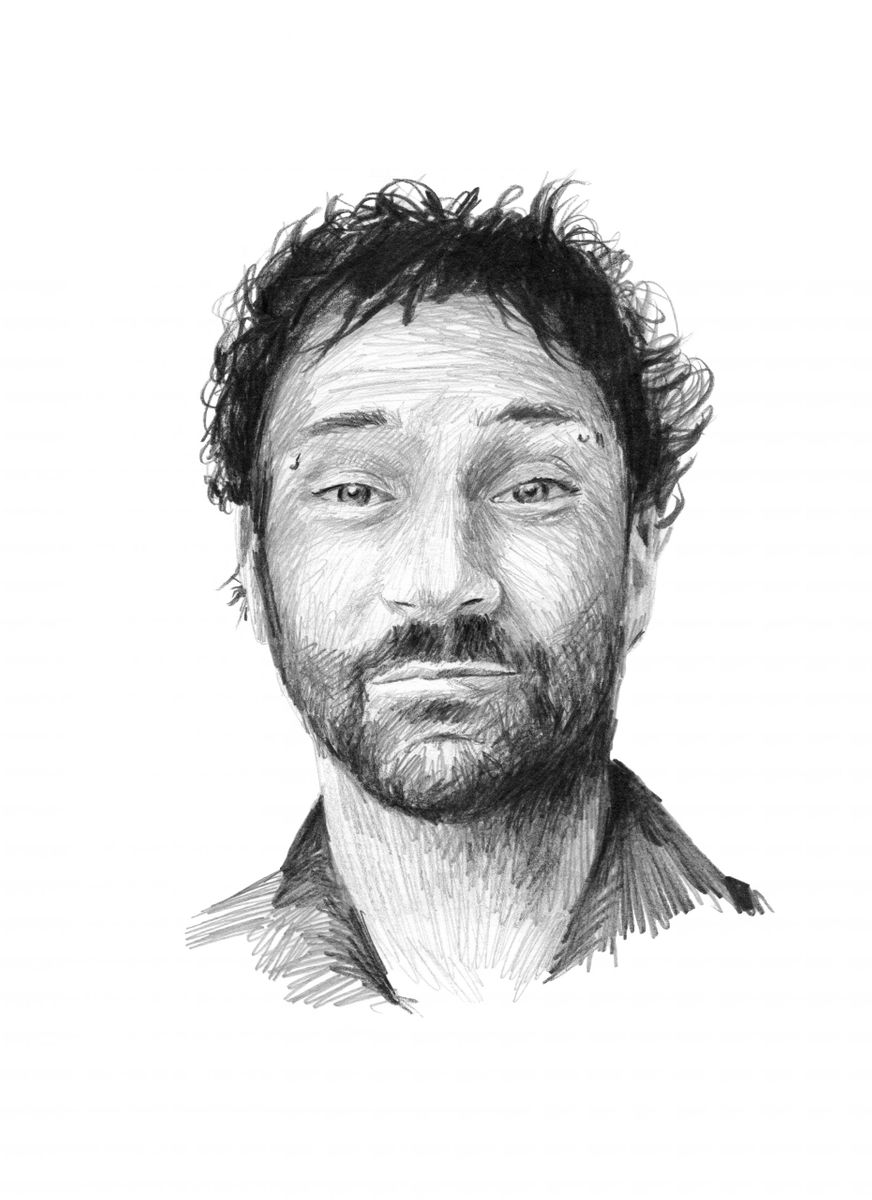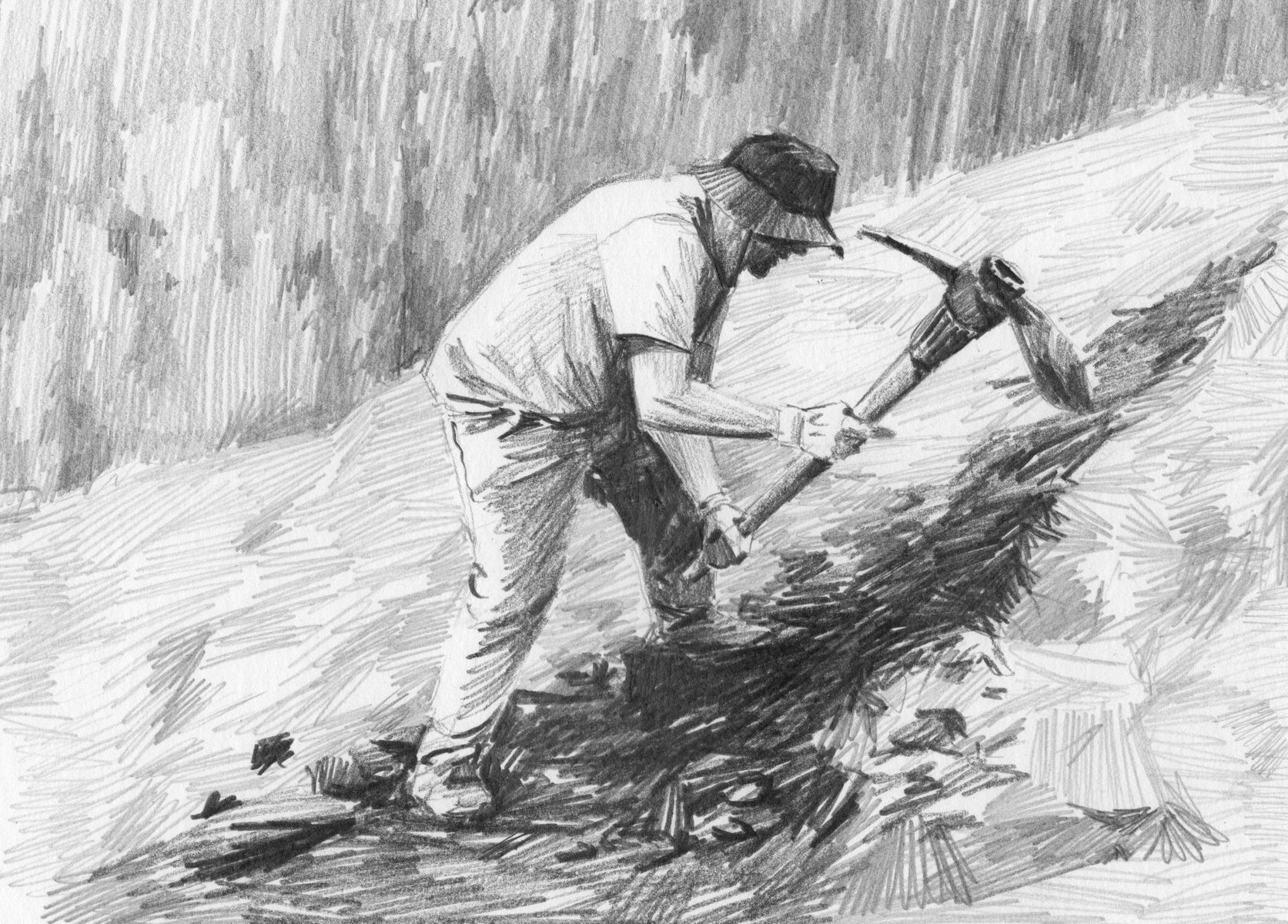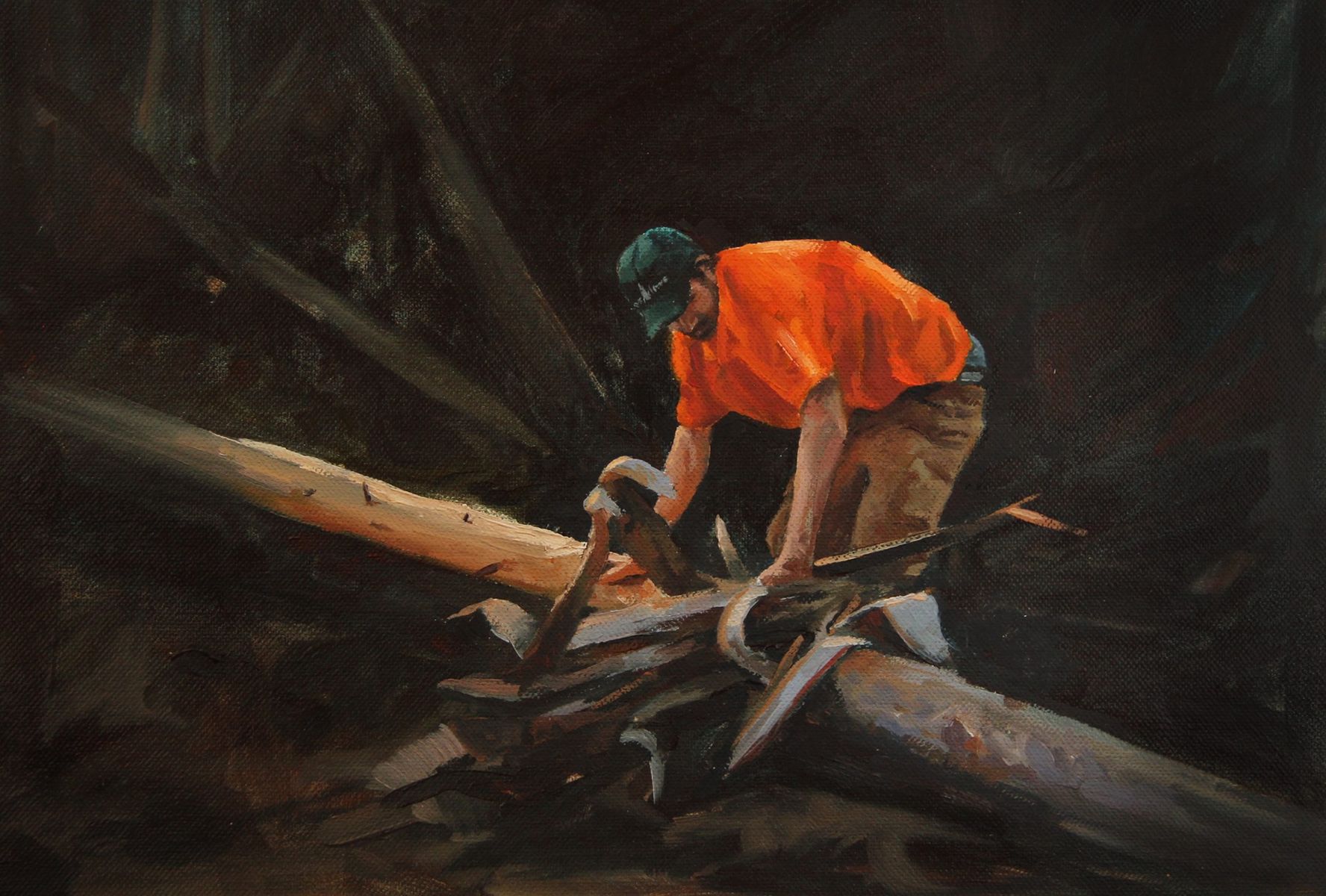In this new illustrated series, Anders Engberg looks at the relationship between trail builders, the earth they work, and their views on riding. First up, we take a trip to Pacific Northwest to talk to trail builder Adam McCoy.
Massive conifers stand guard as a single orange clad figure appears in the dappled forest light. It ́s morning and trail builder Adam McCoy navigates the fern on his way to Loam River, a project he has been working on for some time. Reaching the spot where the new trail looks onto unbroken ground tools are brought out. Rocks, root mats and loam will not surrender easily. The ground finally starts to yield as the mattock bears down, sending a spray of dirt towards a mound that will eventually become one of those features we know and love.


Regardless of project Adam McCoy is no stranger to hard work. Whether in high alpine terrain splitting rock or in the woods wrestling roots and stumps Adam has got the grit and determination that is needed to build great trails. Loam River is not his first endeavour. He has been involved in various builds including Wishful Peak and Dollar Store at Retallack lodge to mention a few.
To trace Adams’s journey to become a trail builder one has to go back in time.
Latest Singletrack Merch
Buying and wearing our sustainable merch is another great way to support Singletrack
In 1987 some of the same conifers were already holding the peace in the forests around the Pacific Northwest. This year Adam was seven and not uncommonly found kicking up dirt jumps with his shoes or carving out jumps in people’s yards to hit with his BMX bike. Eventually the two wheeled experience got motorized turning into a 12 year Motocross career where mountain bikes made their debut as a training tool.
After the motocross career was finished Adam started a snowboard and skateboard shop. Contemporary mountain bike culture was moving head first into the freeride realms and the absence of mountain bike related casual wear did not go unnoticed by Adam. During this time he spent more and more time on mountain bikes as the bikes and trails simultaneously evolved. His passion for riding and digging grew, and his business moved into the mountain bike scene. This marked the beginning of Treelines Northwest, a company making the casual mountain bike attire that Adam felt was lacking in the industry. The brand not only sells clothes, but also allocates funds towards build days and sponsored events. Adam has great insight in what trail building means from a riding and a building perspective. In this short Q&A he took some time to share his thoughts on trail building.

What do you think defines a successfully built trail?
Adam – ‘Knowing it is going to take a very long time and being realistic about that. Don’t rush it ever. I usually approach a big project in the number of years it’s going to take and then break it down into phases.
I think I’m 4 years into the current project. Maybe one or 2 more to go. Use of the terrain is very important. Getting the grade correct and maximising trail length without sacrificing flow and speed. So basically routing. Most people don’t spend enough time scouting the entire zone before putting tools into the ground. Also how does the line fit into the network? Next would be natural features and how they fit in. Last would be how the style of building is applied to the terrain. For example if its a very flat section, then a more buffed out trail will help carry speed. A steeper section should be left more raw and tech to slow the rider down. Drainage should be considered on ever section and feature. You should not have to worry about puddles because you dug in too deep or didn’t lay pipe.‘
How do you approach a new project? What do you look for in terms of gradients and natural features?
Adam – ‘I really like to leave it as natural as possible unless benching on a steep side slope. Corners should be bermed out and dug in well. It is also important to spot where an ideal crossing for bridges across creeks and drainages are.’

Are there any kind of specific features you would like to see being built more frequently?
Adam – ‘Everybody loves jumps, but I really enjoy corners and rollers these days. I am not a huge fan of woodwork where it is not necessary, no offence to those who like wooden features, but I feel it is a lot of work to build some wood features where normal trail would be fine. I do like wood drops into natural landings, and of course creek crossings or bog crossings. I have to be realistic about my time in the woods and be sure to maximise it to get the trail done.’
From a builder’s perspective, what makes up a good time on the trail?
Adam – ‘I feel the word flow is over used these days, but it is so important to have a good lap. Consistency of the trail style is good too. Grade reversals are pretty fun, and I think proper placed features is key. Put a jump where one fits in here and there. Varied sizes of jumps can be good too. Some small rhythm gaps and some longer ones in the right places is super fun.’

Finally, where do you think the biggest challenges in maintaining trails are?
Adam – ‘Seeing where you made mistakes on the original build is always a tough pill to swallow, having to reroute or rebuild a big feature. But for the most part, going back and giving your old trail a total make over is quite fun and much easier then breaking ground on a new one.’
End note: A big thanks to Adam McCoy for taking the time for this interview. Also, a special thanks to photographer Brad Andrew for providing the excellent photos used as reference for the paintings and drawings above.
- Treelines Northwest check out their instagram or website
- Brad Andrew photography
- Anders’ illustrations have been made in pencil, acrylic and oil paint.





I agree ‘flow’ is overused as a word in trails and misunderstood a lot, as a concept. Flow is a state of mind…. A trail that lets us build to that state, isn’t just smooth or lets us maintain momentum. It’s a trail that has a perfect blend and rhythm of challenges, obstacles and rewards. That’s my two-pennoth anyway.